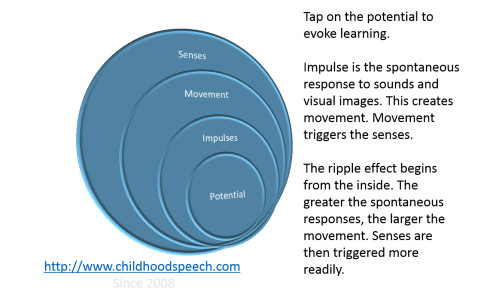We all know that language is the most important asset of a people. Language is the one thing that you can carry with you everywhere you go. Learning a language is essential for any person. Enough said. For a child, the only reason why he is asked to LEARN a language is because they have to pass the school tests and examinations. Without school, anyone can pick a language. Through songs, music, poetry or social environment.
Language itself can be taught by the parents and caregivers. But the learning process is still very much the work of the child.
How does a child learn?
By Impulse and Movement
Language is a living medium of communication. Whereas learning is a process of transforming potential to movement. So if want the child to use his senses, we need to teach the child to work with his potential to learn.
By tapping on his potential for learning, we are helping the senses to be used. The idea of sense itself is the impulse to act. Without this impulse , there is no movement because there’s no action. Learning does not depend on the use of sense. It’s to will the impulse to act in the direction of learning. For a child, it takes no time to act on impulse. He is responsive to any movement and sound. The ever changing impulse creates the learning process. From here, the senses start to develop , and become stronger. Then when they are exposed again to the same exercise of learning, these senses are readily triggered by the impulses to act. Without movement , the senses are not used.
So how does a child learn a language or new skills ? They learn with impulses and movement. Impulse is the spontaneous response to sounds and visual images. This creates movement . Movement triggers the senses.


